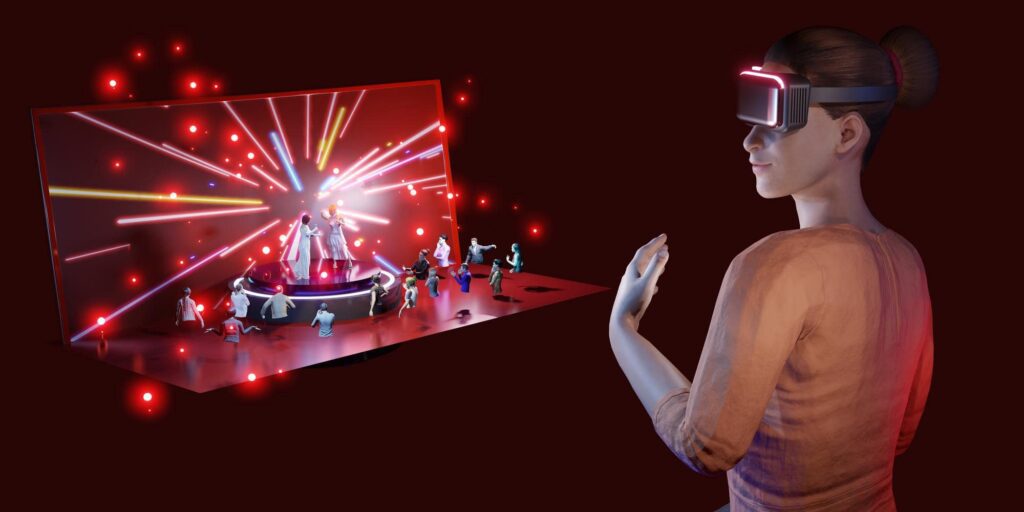Virtual reality (VR) has experienced significant advancements in hardware, content creation, and applications in recent years. Companies like Oculus, HTC, and Sony have developed sleeker and more affordable VR headsets, offering improved performance and comfort. Content creators have harnessed the potential of VR in filmmaking and gaming, creating immersive narratives and experiences. VR has also found applications in healthcare and education, allowing for simulated medical procedures and immersive learning experiences. The future of VR looks promising, with ongoing advancements in technology and the potential for haptic feedback and augmented/mixed reality. As the technology continues to develop, the possibilities for immersive experiences will expand.
Innovations in Virtual Reality: An Inside Look at the Future of Immersive Experiences
Introduction
Virtual Reality (VR) has come a long way in a relatively short amount of time. Initially viewed as a niche technology, VR has now captured the attention of industries ranging from gaming and entertainment to healthcare and education. Innovations in VR hardware, software, and content creation have paved the way for truly immersive experiences that push the boundaries of what was once thought possible.
The Evolution of VR Hardware
One of the key drivers behind the advancements in virtual reality has been the development of more sophisticated hardware. Early VR headsets were bulky and expensive, making them inaccessible to the general public. However, recent innovations have resulted in sleeker, more affordable devices that offer improved performance and comfort.
Companies like Oculus, HTC, and Sony have been at the forefront of this hardware revolution, introducing devices such as the Oculus Rift, HTC Vive, and PlayStation VR respectively. These headsets feature high-resolution displays, precise tracking systems, and ergonomic designs, all of which contribute to a more immersive and realistic VR experience.
Revolutionizing Content Creation
While hardware plays a crucial role in VR immersion, the availability of compelling content is equally important. In recent years, content creators have been exploring innovative ways to harness the potential of VR, resulting in transformative experiences for users.
Virtual reality filmmaking, for example, has gained popularity as directors and cinematographers experiment with immersive storytelling techniques. With 360-degree cameras and advanced editing software, filmmakers are able to create immersive narratives where users can explore environments and interact with characters in unprecedented ways.
Besides filmmaking, the gaming industry has been a driving force behind VR content creation. Developers are continuously pushing the boundaries of what can be achieved in virtual reality, offering gamers fully immersive adventures that transport them to other dimensions. From realistic simulations to fantastical worlds, VR games provide experiences that are impossible to replicate through traditional gaming platforms.
Applications Beyond Entertainment
While entertainment remains a significant driver of VR innovation, the technology has also found applications outside of gaming and filmmaking. Industries such as healthcare, education, and engineering are exploring the potential of virtual reality to enhance their respective fields.
In healthcare, for instance, VR has been used to simulate medical procedures, allowing students to practice surgeries in a safe and controlled environment. This technology has the potential to revolutionize medical training, ensuring that doctors and surgeons are better prepared for real-life scenarios.
In the field of education, VR opens up new possibilities for immersive learning experiences. Students can now explore historical landmarks, visit foreign countries, or even journey through the human body, all from the comfort of their classrooms. This interactive and engaging approach to education has the potential to enhance retention and understanding among students.
The Future of Immersive Experiences
The future of virtual reality appears promising, with ongoing advancements in technology and the increasing adoption of VR in various industries. As hardware continues to become more affordable and accessible, we can expect to see even greater innovation in the development of VR headsets, controllers, haptic feedback devices, and other peripherals.
Furthermore, advancements in haptic feedback technology will allow users to experience tactile sensations in virtual environments, heightening the level of immersion. Imagine feeling the texture of different surfaces, experiencing the weight of objects, or even feeling the warmth of a virtual sun.
Another exciting area of development is augmented reality (AR) and mixed reality (MR), which blend virtual elements with the real world. This technology has the potential to revolutionize industries such as architecture, interior design, and remote collaboration, where users can overlay virtual models onto real-world environments, making visualization and communication more effective.
Conclusion
Virtual reality has evolved from a niche concept to a technology with vast potential. Innovations in hardware, content creation, and applications have paved the way for immersive experiences that captivate and engage users across various industries. As the technology continues to advance, we can expect even more exciting developments in the future, pushing the boundaries of what is possible in virtual reality.
